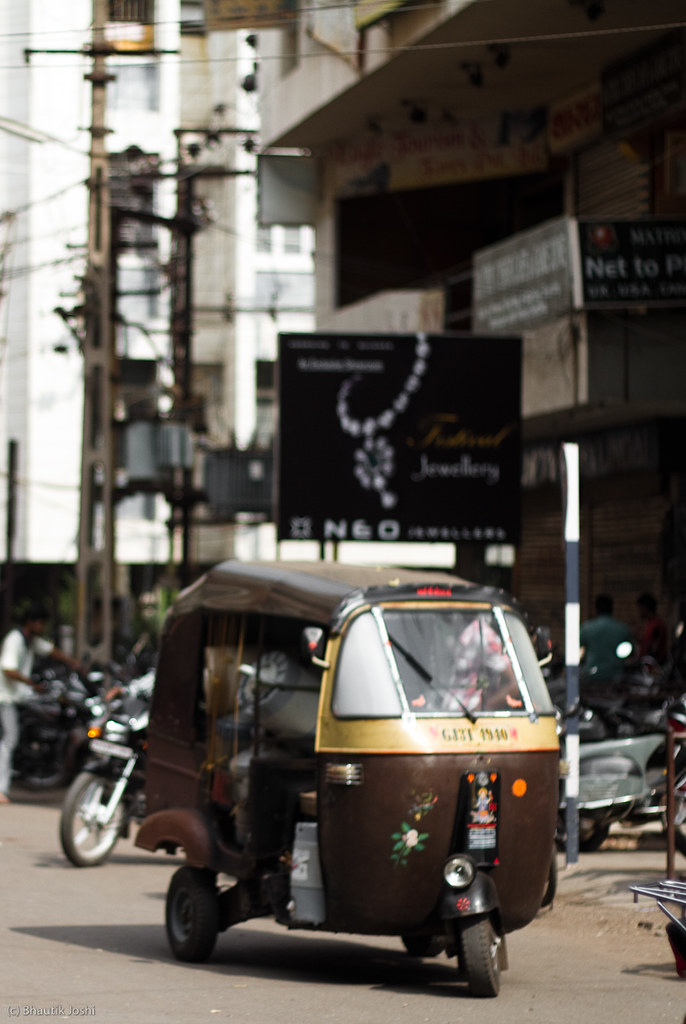
Rickshaws in Gujarat have been largely upgraded since I last visited - the engines run quietly and cleanly on compressed natural gas. However, a few of the old-style rickshaws remain - they scoot along making a distressing smell (it's like they run on kerosene) and an odd putt-putt noise as they move along.
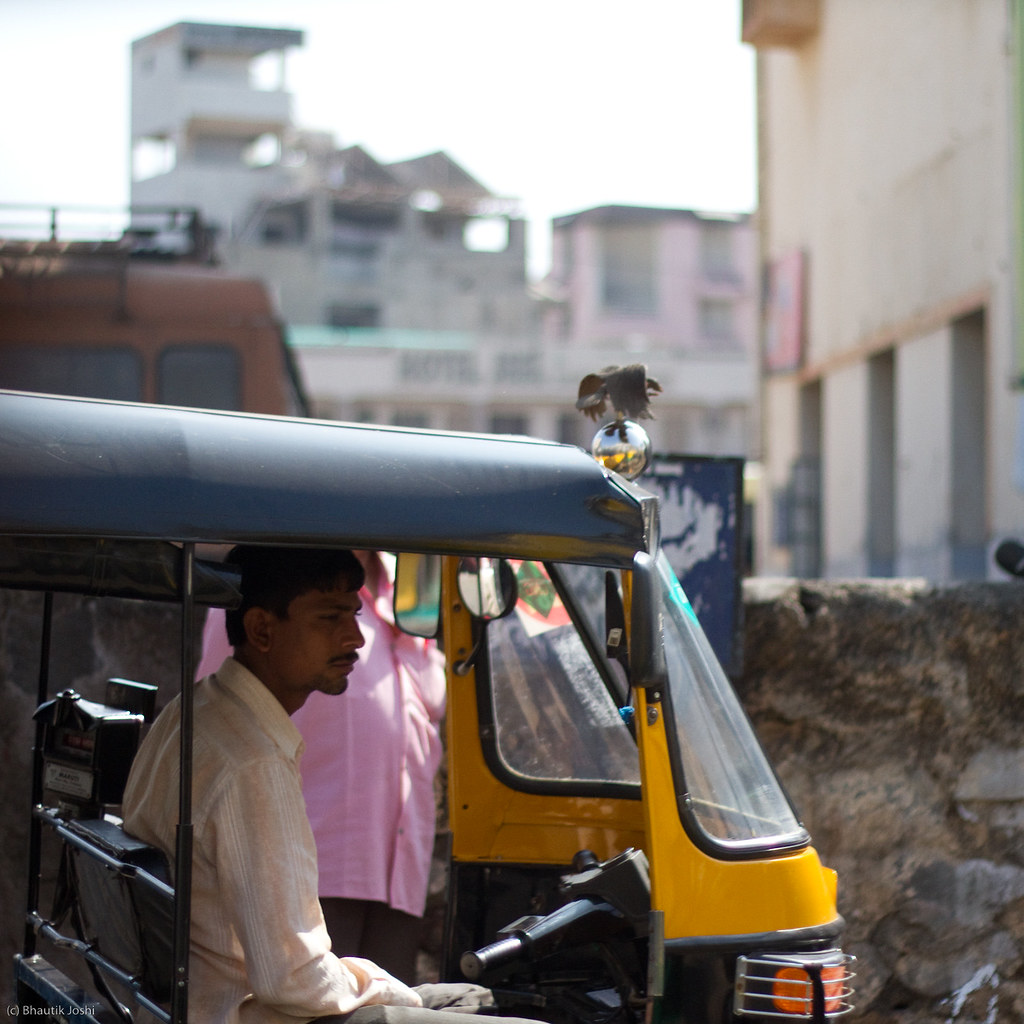
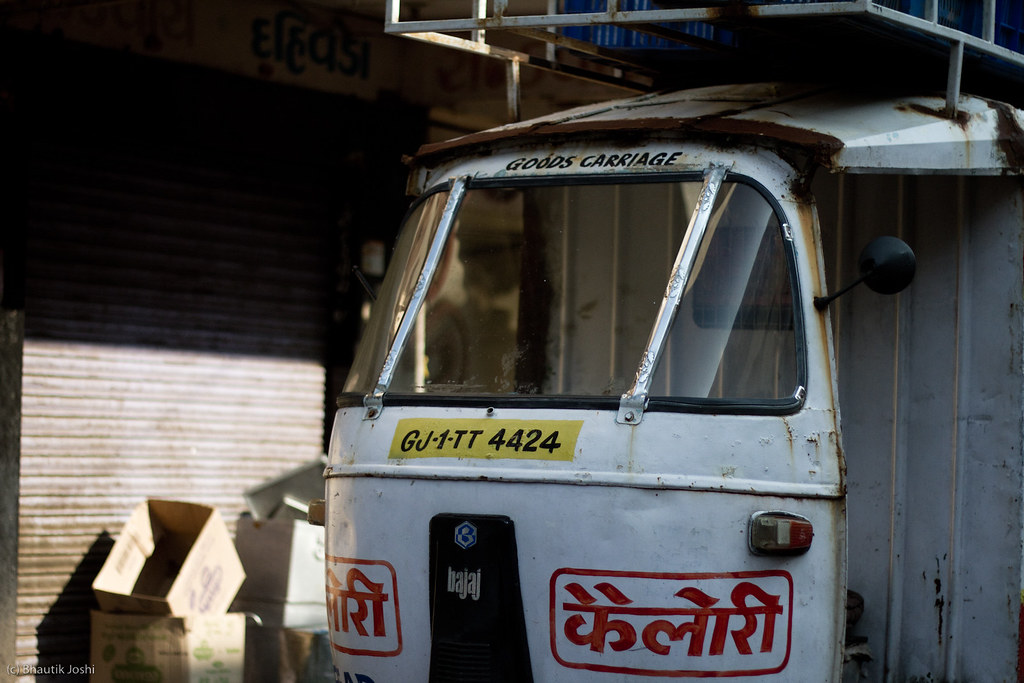
If it has wheels, it's used to move goods. This old rickshaw has been converted for use as a truck to deliver bread.


Bicycles are also a common mode of transporting goods - I saw quite a few of these bicycles with a large tray and axle on the back. Note the complete lack of gears - I saw quite a few riders sweating and pedaling with difficult strokes on uneven, bumpy roads with a huge load of cargo on the back.
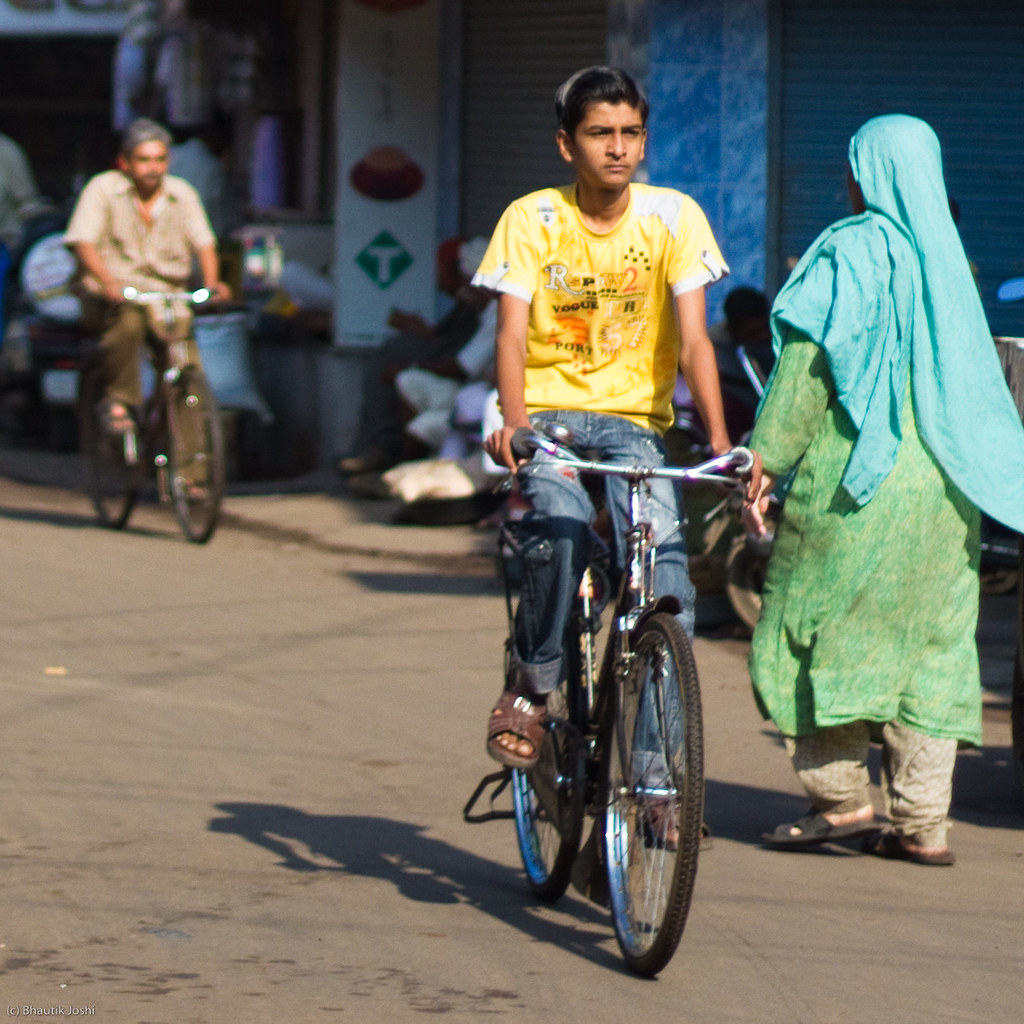
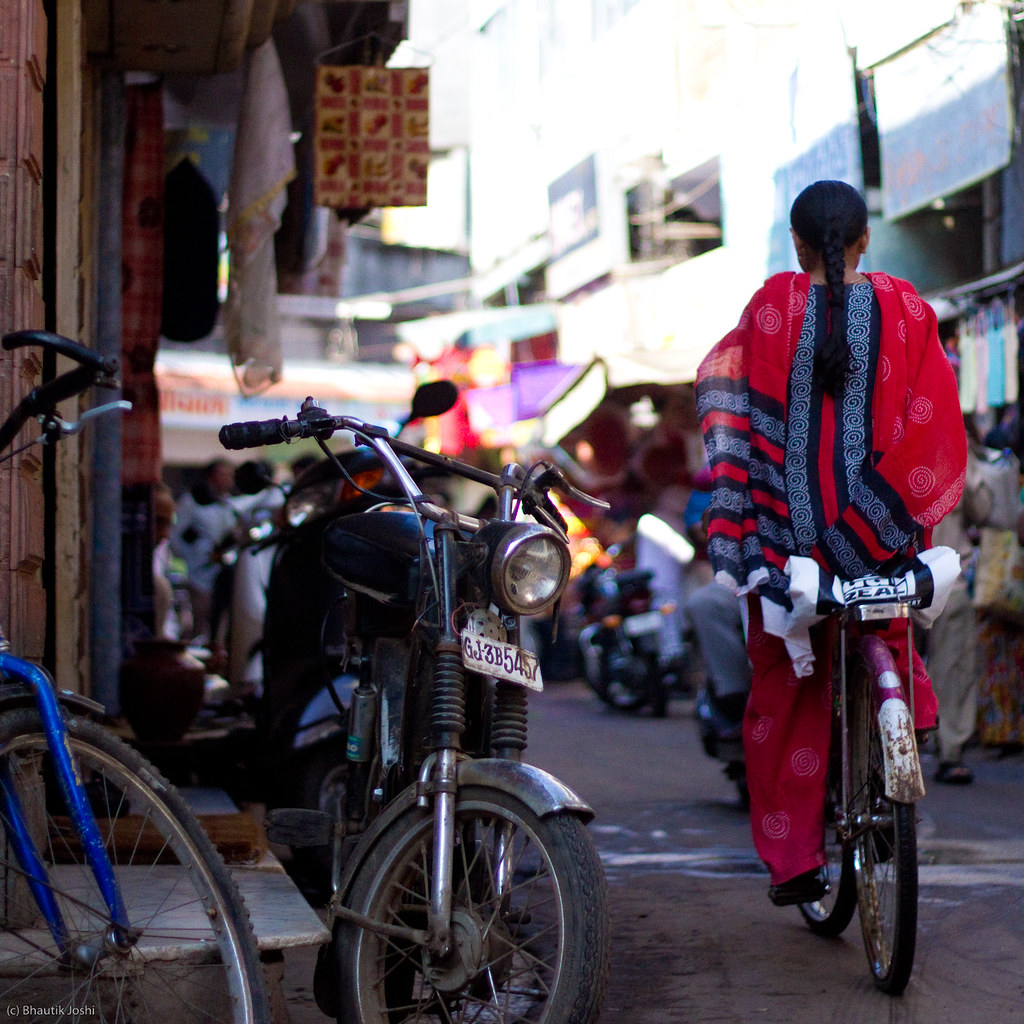
Complex, beautiful modes of dress were no obstacle for determined bicycle riders in Rajkot.
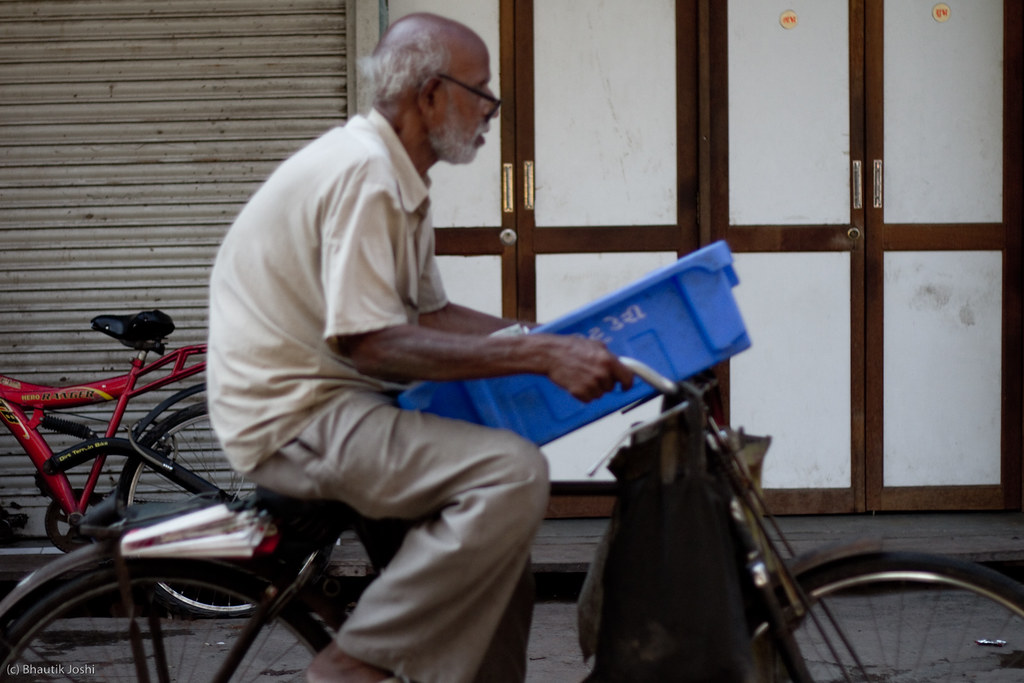
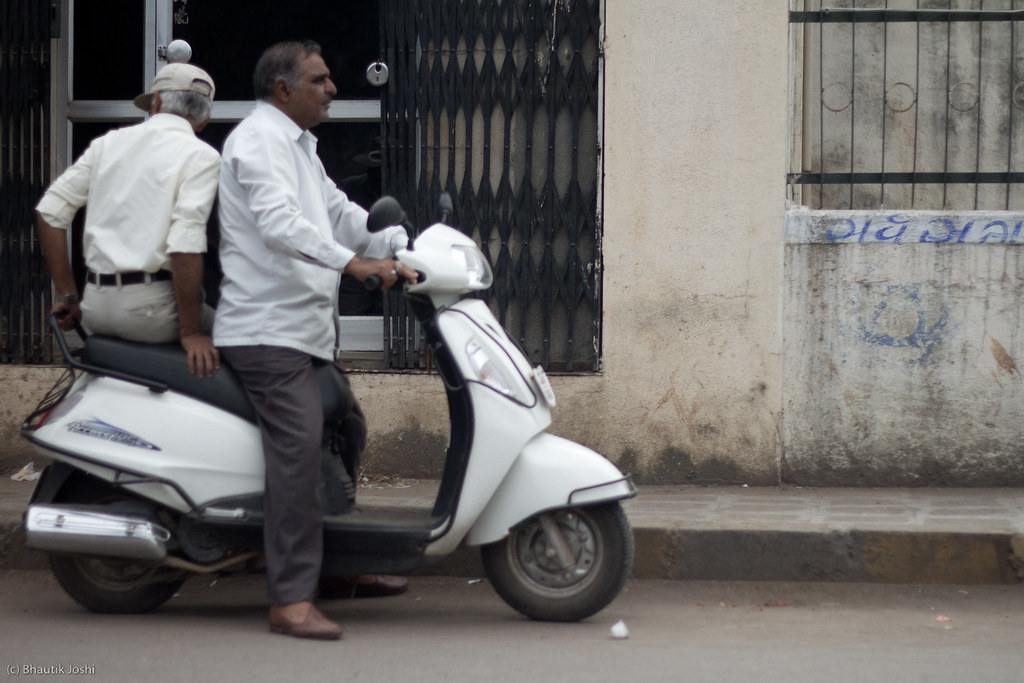
Scooters and motorbikes seemed to be, by far, the most common mode of transport on Rajkot. You'd see as many scooters with two or more riders as you did with one rider; again, they seemed to be yet another way of getting people and goods around. The sheer volume of them and their sooty exhausts let me to wonder if they were a big part of the pollution problem in the area.
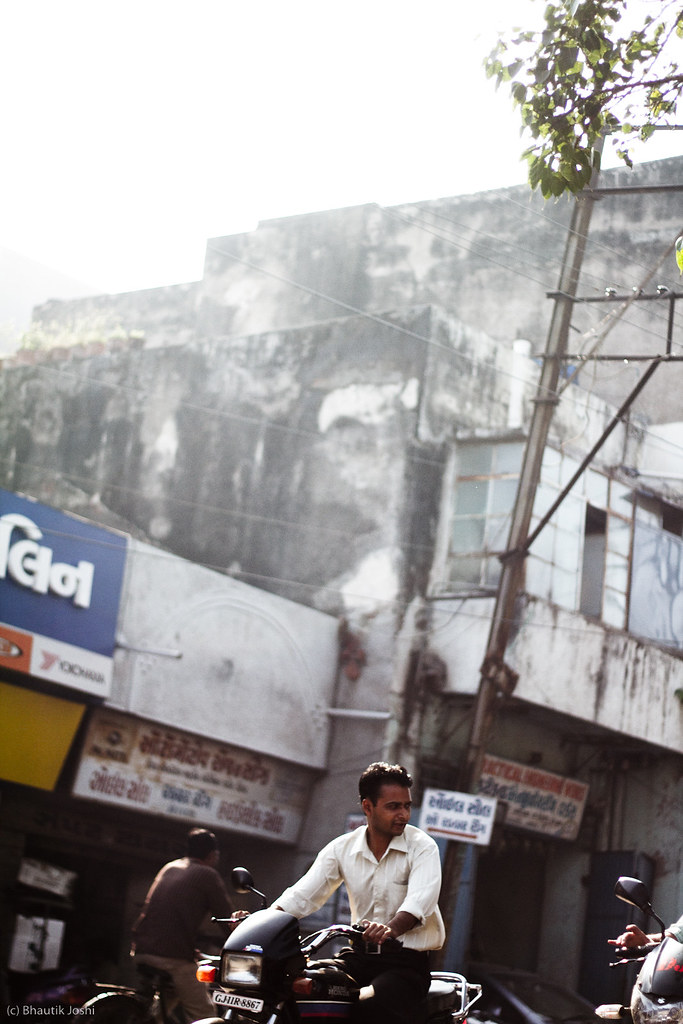
Honda Heroes were the most common type of motorbike that I saw over there. The roads were chaotic (traffic driving in both directions on a one-way road, general multi-way chaos when it came to roundabouts) but, in the end, accidents were few and there was a bizarre sort of logic to it. The driving algorithm went like this:
1. Start the vehicle, honk your horn.
2. Head in the direction of where you want to go (doesn't matter if you're moving against the direction of traffic). If there is someone where you want to be, honk your horn.
3. If there is someone bigger than you, give way.
It's completely insane, but it seemed to work even with the insane combination of pedestrians, bicycles, rickshaws, cars, trucks and cows on the road.
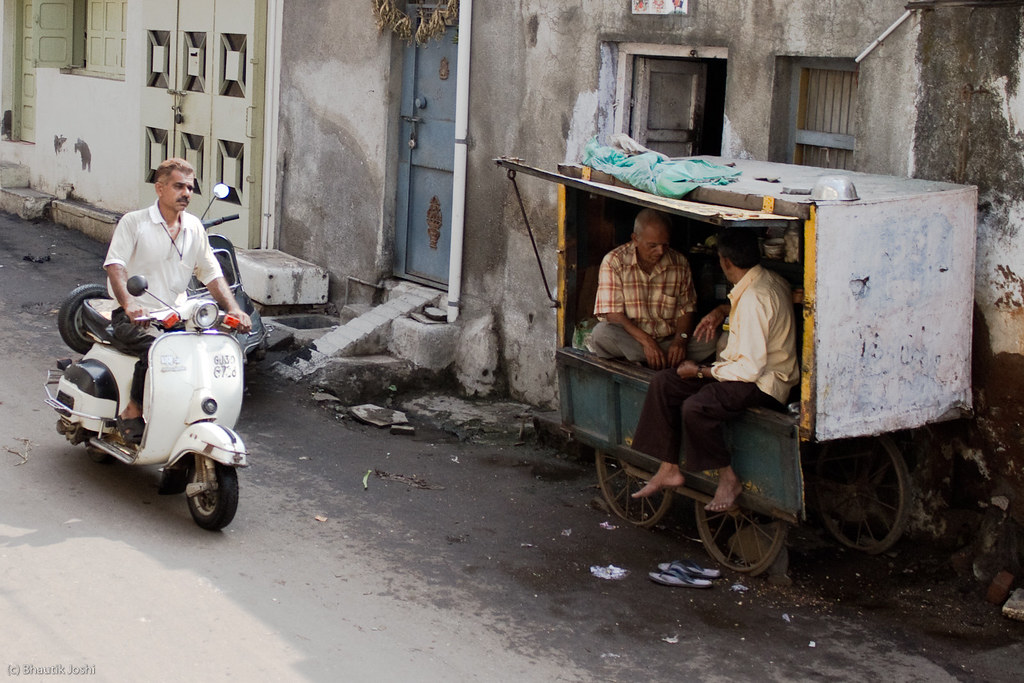

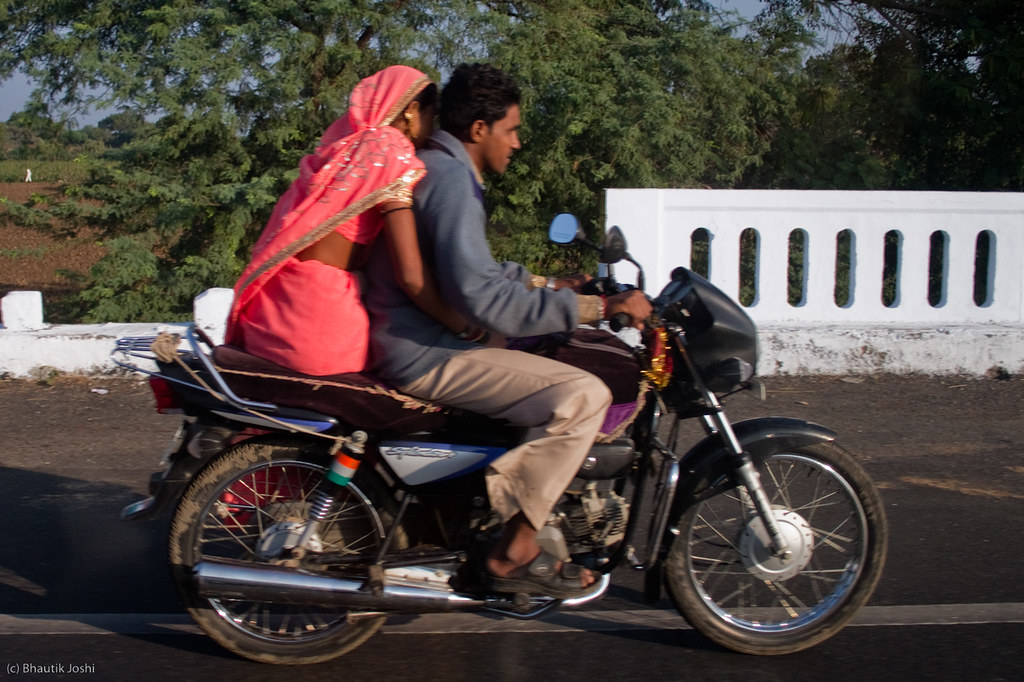
There are plenty of family-carrying motorbikes out on the highways.

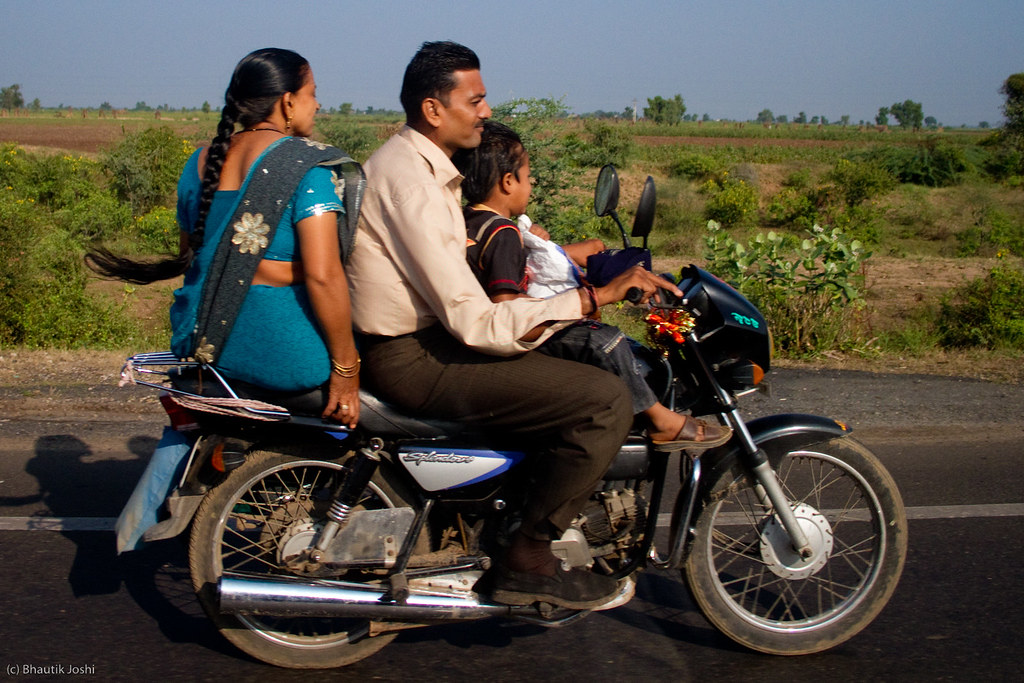
Family transport.
No comments:
Post a Comment